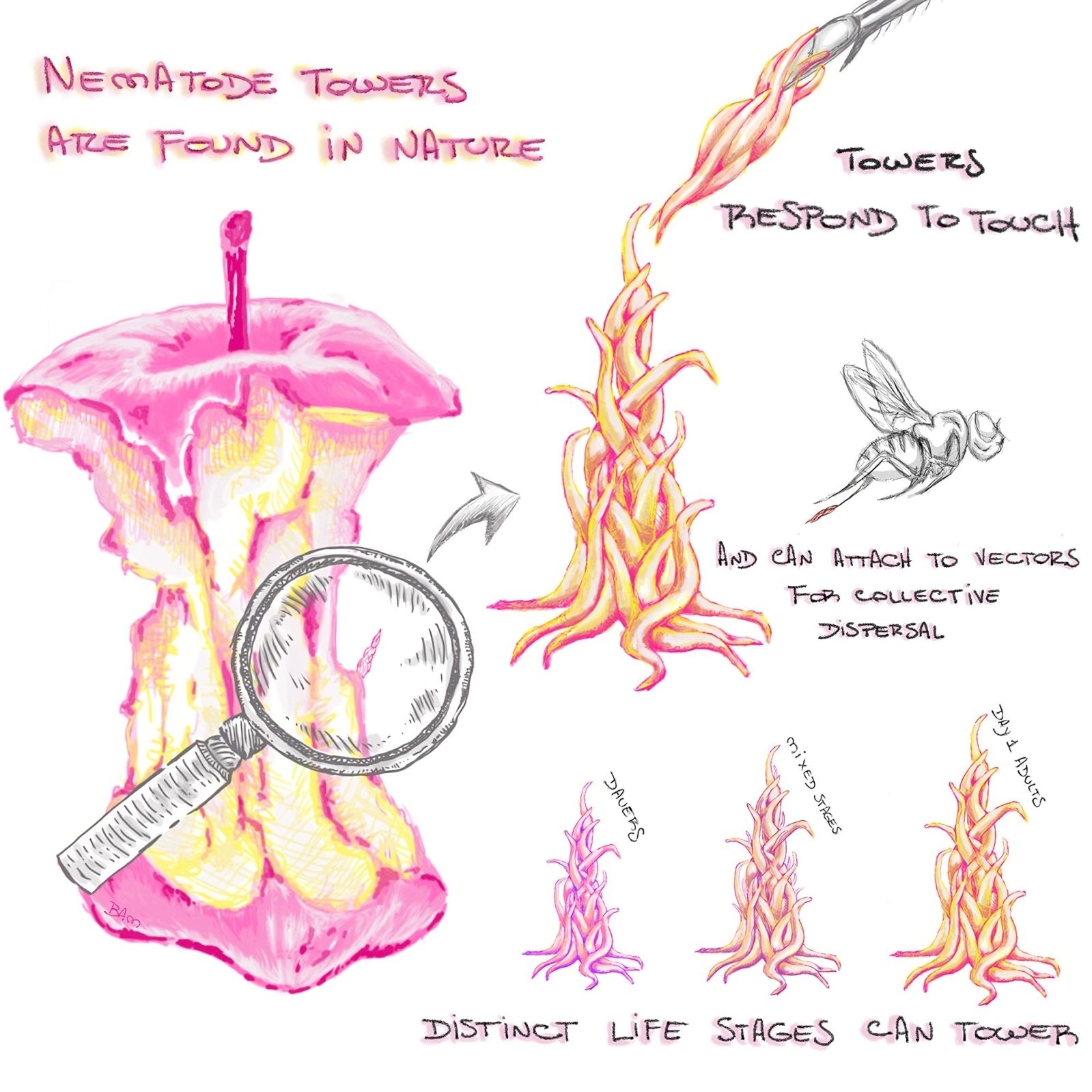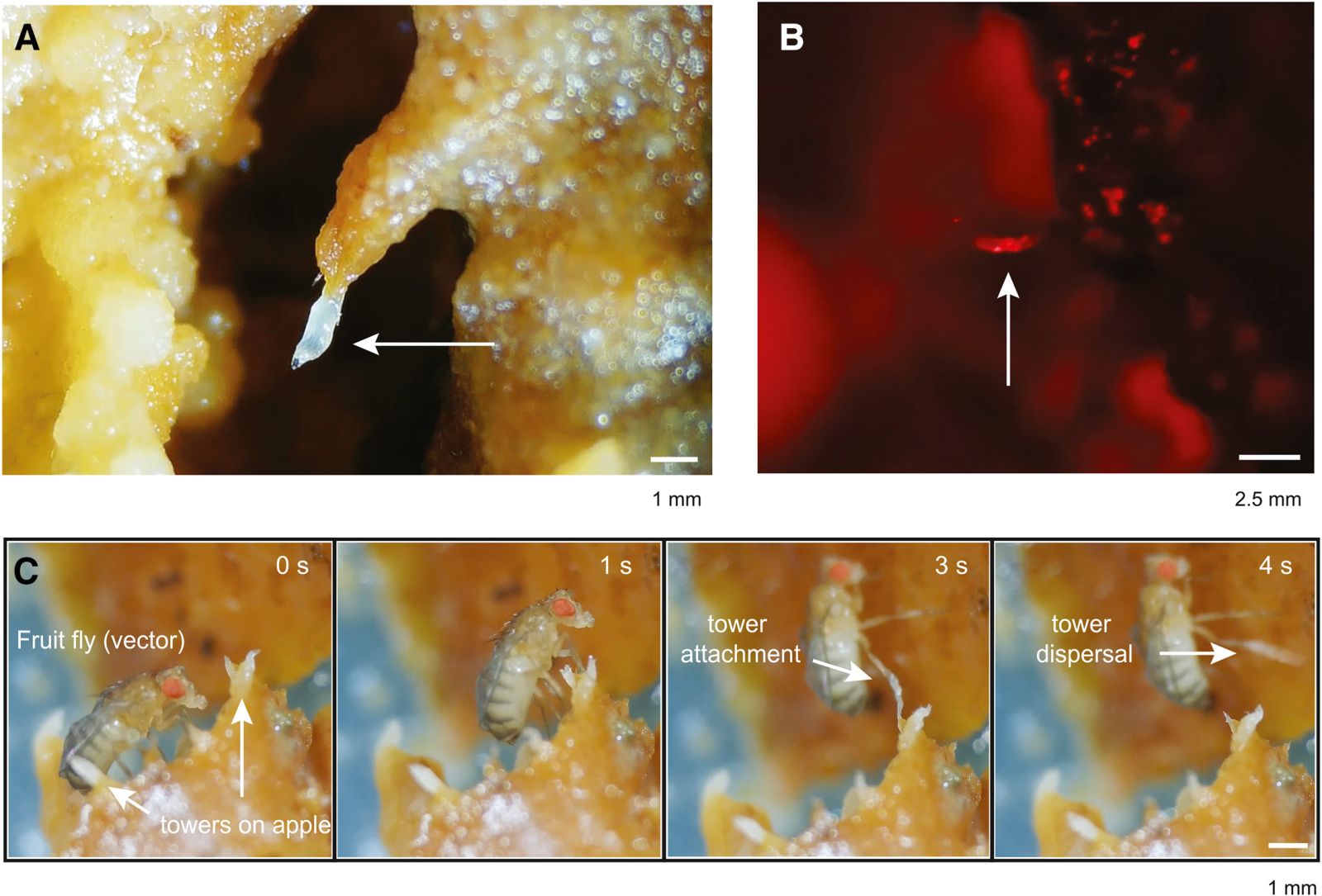🐛 Worms assemble into a "superorganism"
Published by Cédric,
Article author: Cédric DEPOND
Source: Current Biology
Other Languages: FR, DE, ES, PT
Article author: Cédric DEPOND
Source: Current Biology
Other Languages: FR, DE, ES, PT
Follow us on Google News (click on ☆)
This observation, long confined to laboratories, has finally been documented in the wild. Researchers have identified worm towers rising to escape hostile conditions, like a superorganism, revealing surprising cooperation.

A living and functional architecture
The towers are not the result of random stacking. The worms, mostly in the larval stage, arrange themselves in a synchronized manner to form a dynamic structure. These towers can reach a height of nearly half an inch (about 1 cm, while the worms are the size of a grain of salt) and respond to external stimuli.
In the lab, the team replicated this phenomenon with Caenorhabditis elegans, a well-known biological model. The worms used toothbrush bristles as support to build their towers in less than two hours. This reconstruction confirms the reproducibility of the behavior.
The absence of hierarchy among the worms raises questions. Unlike ants or bees, no individual directs the operation. Yet, the coordination is remarkable, suggesting subtle, still poorly understood communication.

A collective dispersal strategy
The towers act as launch pads to colonize new habitats. The worms at the top cling to passing insects or overcome obstacles they couldn't surmount alone. This tactic optimizes their chances of survival during food shortages.
In nature, only certain nematode species exhibit this behavior. Researchers don't know why other worms don't form towers despite similar conditions. Genetics or environmental factors could explain this specificity.
Potential applications are vast, particularly in robotics or the study of collective movements. However, the underlying mechanisms remain to be elucidated, opening a promising field of research.